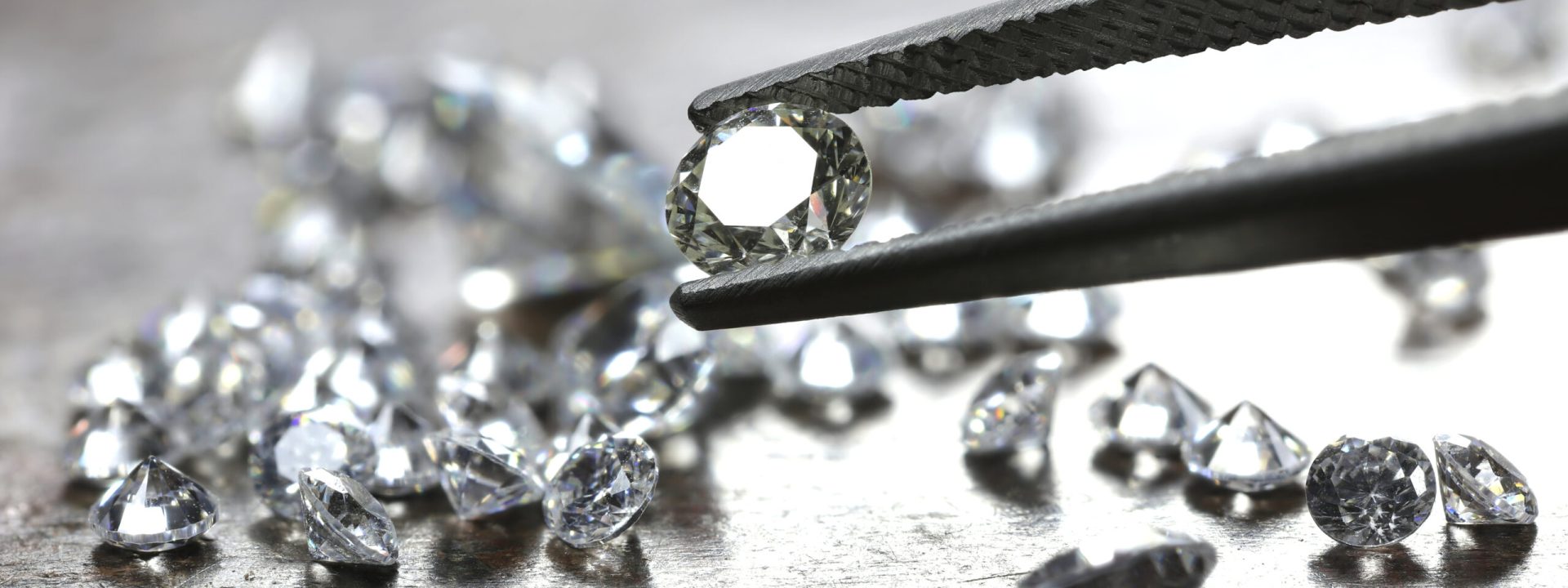
The cut of a diamond is the arrangement of the facets in the stone, which affects the price and beauty of the diamond. How much a diamond will reflect light varies on the skill and craft of the diamond cutter. When precisely cut, the diamond’s light gets reflected from one facet to another resulting in a burst of brilliance.
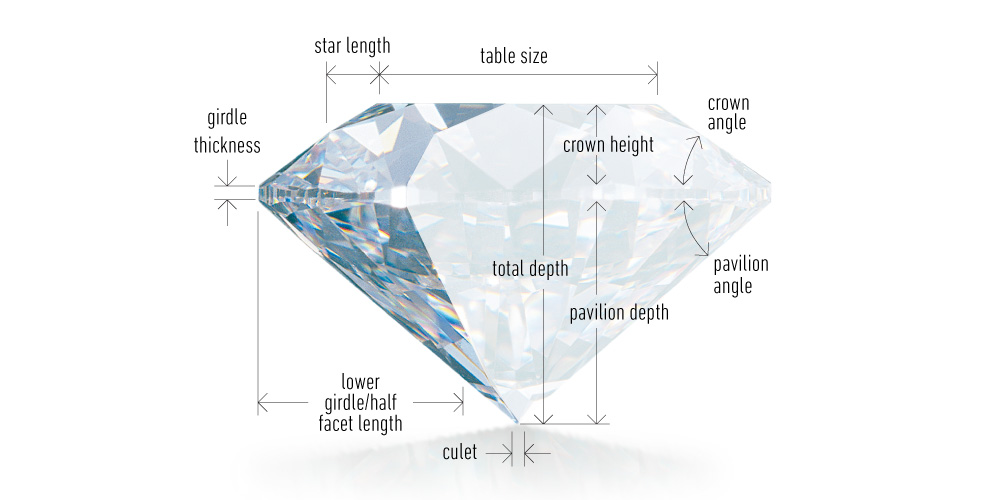
Brightness – This is both the internal and external light that the diamond reflects.
Fire – This refers to the rainbow of colors that the white light scatters into.
Scintillation – This is the amount of sparkle produced by the pattern of light and dark areas that are caused by reflections within the diamond.
The grading system for measuring the type and size of impurities in diamonds was established by the GIA. Diamonds receive the FL (flawless) grade when there is no inclusion or blemish that interferes with the passage of light going through the stone.
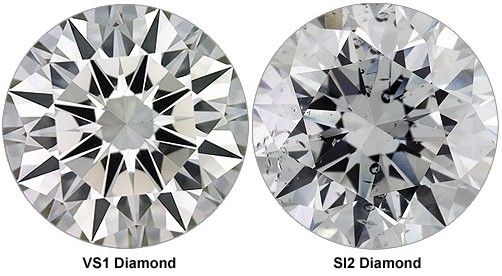
FL & IF – Flawless & Internally Flawless – no inclusions visible under 10x magnification
VVS1 & VVS2 – Very, Very Slightly Included – minute inclusions, hard to view under 10x magnification
VS1 & VS2 – Very Slightly Included – slight inclusions, visible under 10x magnification but not always visible to naked eye
SI1 & SI2 – Slightly Included – slightly more prominent inclusion, visible under 10x magnification but may not be visible to naked eye
I1 & I2 & I3 – Included – inclusions are obvious under 10x magnification and may be visible to the naked eye
The diamond color scale actually measures relative lack of color. The GIA has created a grading scale where a letter is assigned to the degree of colorlessness found in the diamond. Starting with D and going to Z, each letter denotes an increasing amount of light in the diamond.
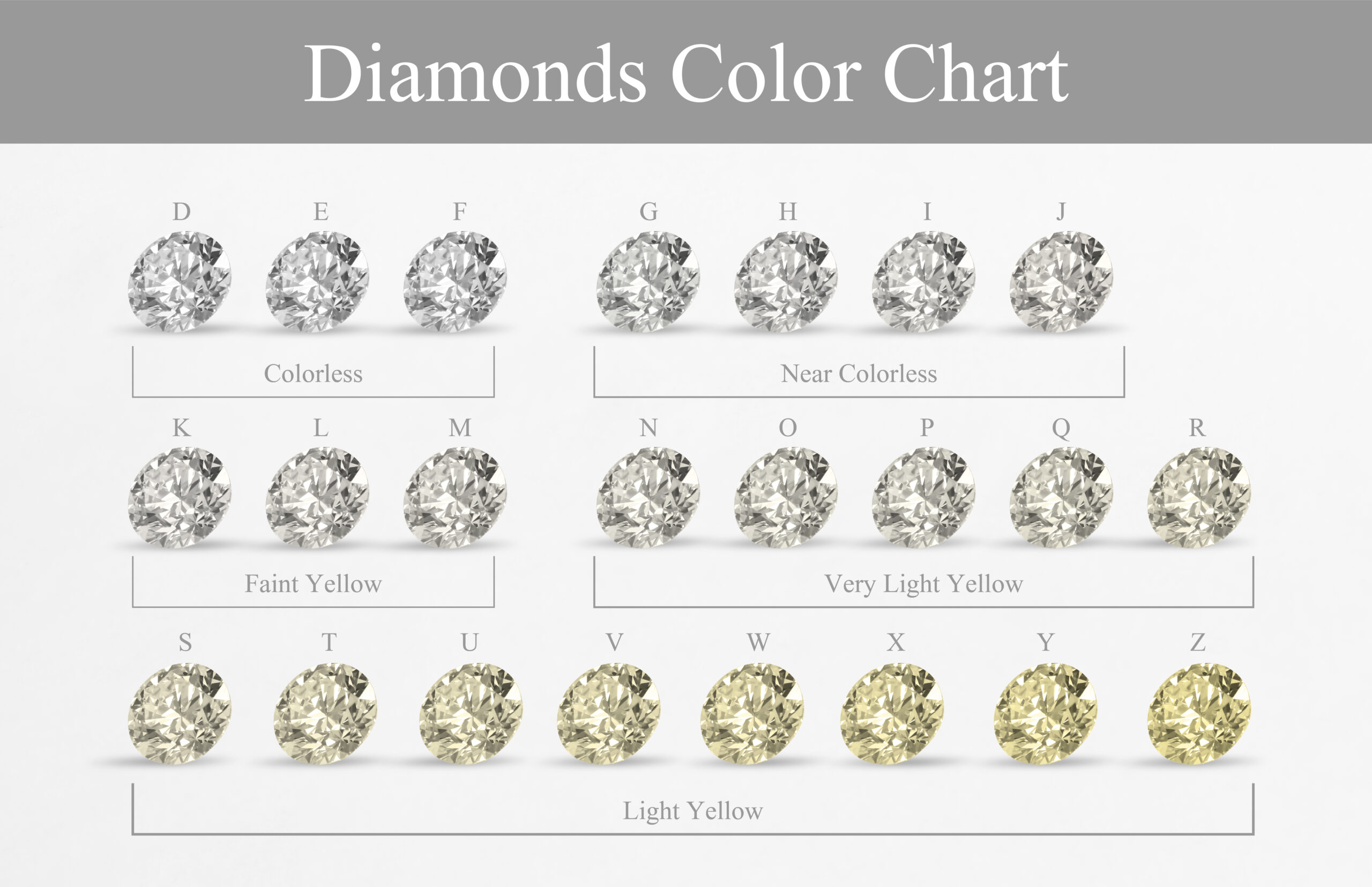
Diamond color chart visualizing the 5 groups of diamond colors with text, "Colorless - D/E/F, Near Colorless - G/H/I/J, Faint Yellow - K/L/M, Very Light Yellow - N/O/P/Q/R, Light Yellow - S/T/U/V/W/X/Y/Z.
D – Highest color grade, completely colorless
E & F – Gemologists can identify traces of colors, even though stone appears colorless
G, H & I – Appear almost colorless because the untrained eye doesn’t see the hint of color
J, K & L – Faint traces of color, visible to untrained eye
M to Z – Body color becomes increasingly more visible to the naked eye
Beyond Z – called “fancy color” diamonds, body color is saturated, typically yellow or brown but can be other colors
Although the carat of a diamond is often thought as synonymous with the size of the diamond, it is actually the weight of the diamond. One carat is equivalent to 200 milligrams or 0.2 grams, and is also divided into 100 points. Points are used for describing precise increments of weight within a carat. A diamond’s price per carat increases in proportion to the size of the gemstone. Two diamonds of the same weight can have also different values based on their color, cut, and clarity.
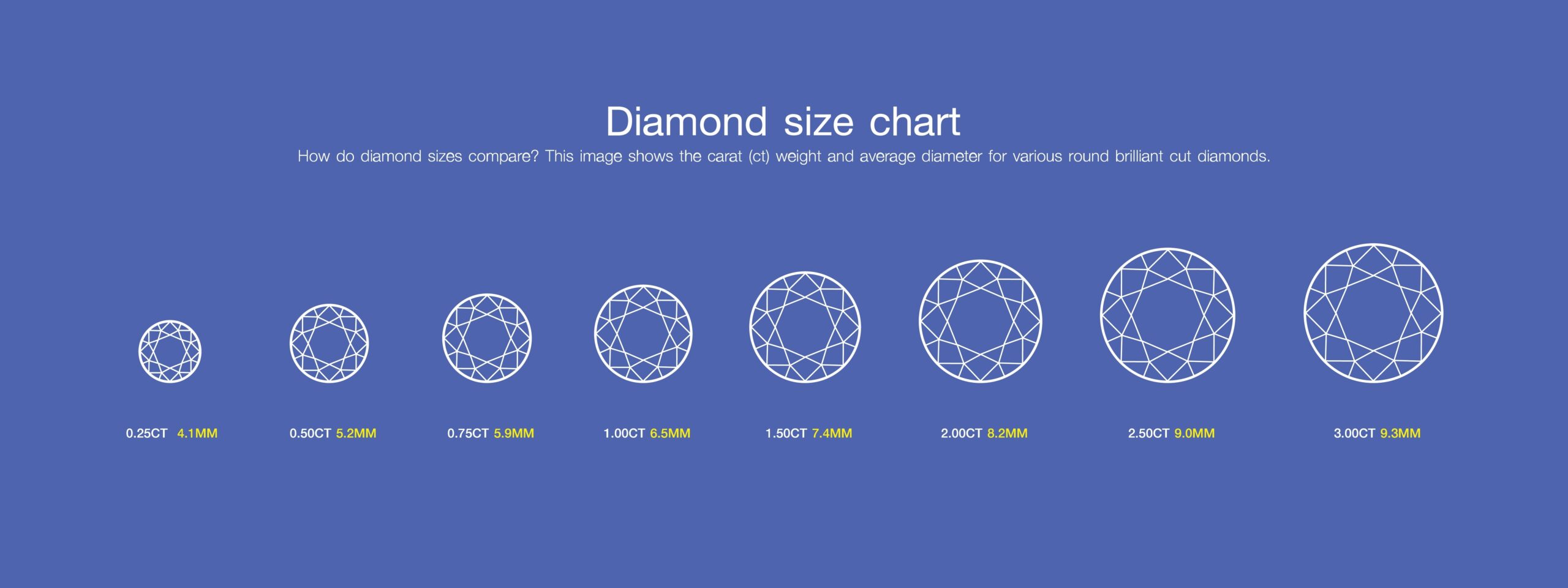
Diamond size chart visualizing the size of various diamonds ranging from 0.25 CTW to 3.00 CTW with text, "Diamond Size Chart: How do diamond sizes compare? This image shows the carat (ct) weight and average diameter for various round brilliant cut diamonds. 0.25CT/4.1MM, 0.50CT/5.2MM, 0.75CT/5.9MM, 1.00CT/6.5MM, 1.50CT/7.4MM, 2.00CT/8.2MM, 2.50CT/9.0MM, 3.00CT/9.3MM.
If you’re looking to get your diamond(s) appraised in the San Diego Area, Elliot Grunwald is the independent appraiser at the San Diego Gemological Laboratory. Contact us today to set up an appraisal appointment and to get more information on appraisal costs.